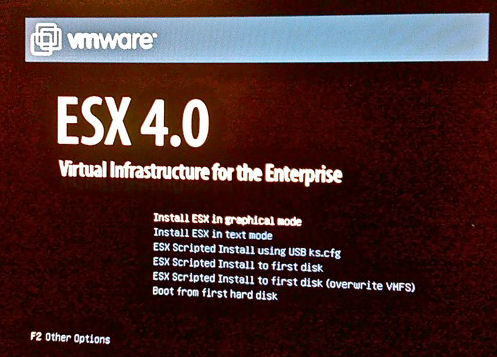Real-world virtualization benchmarking: the best server CPUs compared
by Johan De Gelas on May 21, 2009 3:00 AM EST- Posted in
- IT Computing
Conclusions so Far
Both VMmark and vApus Mark I seem to give results that are almost black and white. They give you two opposite and interesting data points. When you are consolidating extremely high numbers of VMs on one physical server, the Xeon Nehalem annihilates, crushes, and walks over all other CPUs including its own older Xeon brothers… if it is running VMware ESX 4.0 (vSphere). Quickly looking at the VMmark results posted so far seems to suggest you should just rip your old Xeon and Opteron servers out of the rack and start again with the brand-spanking new Nehalem Xeon. I am exaggerating, but the contrast with our own virtualization benchmarking was quite astonishing.
vApus Mark I gives the opposite view: the Xeon Nehalem is without a doubt the fastest platform, but the latest quad-core Opteron is not far behind. If your applications are somewhat similar to the ones we used in vApus mark I, pricing and power consumption may bring the Opteron Shanghai and even the Xeon 54xx back into the picture. However, we are well aware that the current vApus Mark I has its limitations. We have tested on ESX 3.5 Update 4, which is in fact the only available hypervisor from VMware right now. For future decisions, we admit that testing on ESX 4.0 is a lot more relevant, but that does not mean that the numbers above are meaningless. Moving towards a new virtualization platform is not something even experienced IT professionals do quickly. Many scripts might not work properly anymore, the default virtualization hardware is not compatible between the hypervisor, etc. For example, ESX 3.5 servers won't recognize the version 7 hardware from ESX 4 VMs. In a nutshell: if ESX 3.5 is your most important hypervisor platform, both the Xeon 55xx, 54xx, and quad-core Opteron are very viable platforms.
It is also interesting to see the enormous advances CPUs have made in the virtualization area:
- The latest Xeon 55xx of early 2009 is about 4.2 times faster than the best 3.7GHz dual-core Xeons of early 2006.
- The latest Opterons are 2.5 times better than the slightly faster clocked 3.0GHz dual-core Opterons of mid 2007, and based on this we calculate that they are about 3 times faster than their three year older brothers.
Moving from the 3-4 year old dual-core servers towards the newest quad-core Opterons/Xeons will improve the total performance of your server by about 3 to 4 times.

What about ESX 4.0? What about the hypervisors of Xen/Citrix and Microsoft? What will happen once we test with 8 or 12 VMs? The tests are running while I am writing this. We'll be back with more. Until then, we look forward to reading your constructive criticism and feedback.
I would like to thank Tijl Deneut for assisting me with the insane amount of testing and retesting; Dieter Vandroemme for the excellent programming work on vApus; and of course Liz Van Dijk and Jarred Walton for helping me with the final editing of this article.










66 Comments
View All Comments
JohanAnandtech - Friday, May 22, 2009 - link
Most of the time, the number of sessions on TS are limited by the amount of memory. Can you give some insight in what you are running inside a session? If it is light on CPU or I/O resources, sizing will be based on the amount of memory per session only.dragunover - Thursday, May 21, 2009 - link
would be interesting if this was done on desktop CPU's with price / performance ratiosjmke - Thursday, May 21, 2009 - link
nope, that would not be interesting at all. You don't want desktop motherboards, RAM or CPUs in your server room;nor do you run ESX at home. So there's no point to test performance of desktop CPUs.
simtex - Thursday, May 21, 2009 - link
Why so harsh, virtualization will eventually become a part of desktops users everyday life.Imagine, tabbing between different virtualization, like you do in your browser. You might have a secure virtualization for your webapplications, a fast virtualization for your games. Another for streaming music and maybe capturing television. All on one computer, which you seldom have to reboot because everything runs virtualized.
Azsen - Monday, May 25, 2009 - link
Why would you run all those applications on your desktop in VMs? Surely they would just be separate application processes running under the one OS.flipmode - Thursday, May 21, 2009 - link
Speaking from the perspective of how the article can be the most valuable, it is definitely better off to stick to true server hardware for the time being.For desktop users, it is a curiosity that "may eventually" impart some useful data. The tests are immediately valuable for servers and for current server hardware. They are merely of academic curiosity for desktop users on hardware that will be outdated by the time virtualization truly becomes a mainstream scenario on the desktop.
And I do not think he was being harsh, I think he was just being as brief as possible.